-Pooja Sahal
Image Courtesy: Sumit Naskar

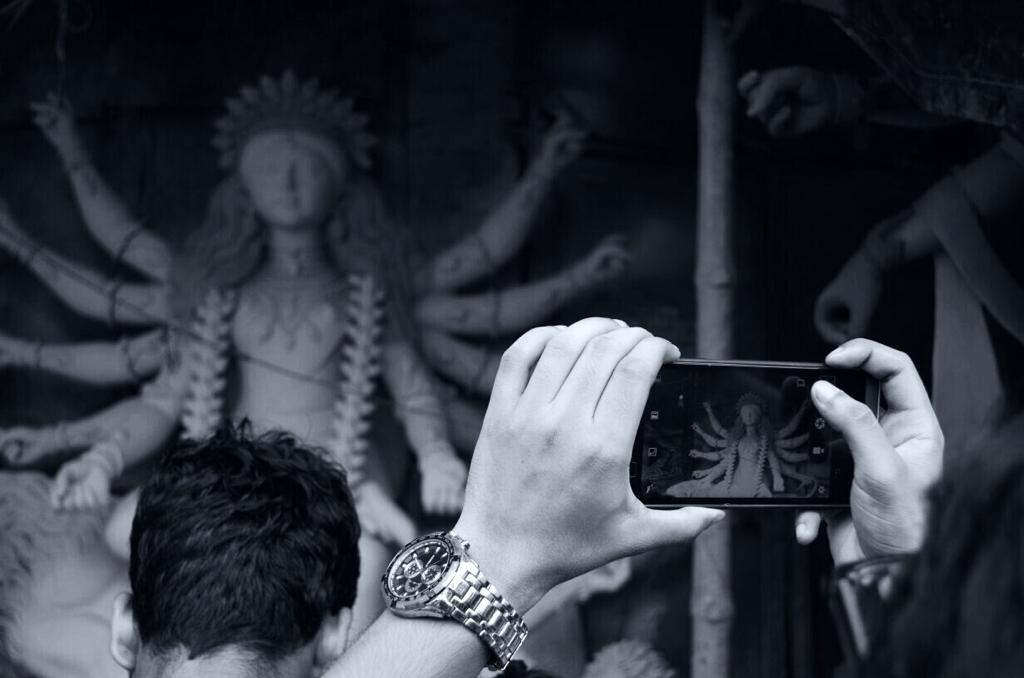
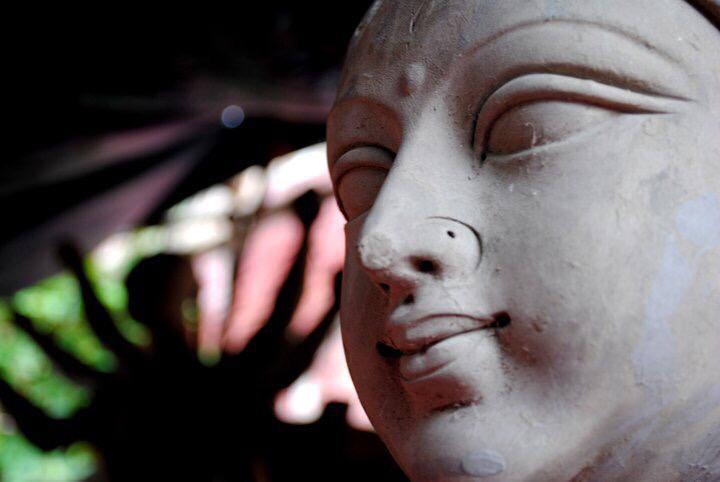

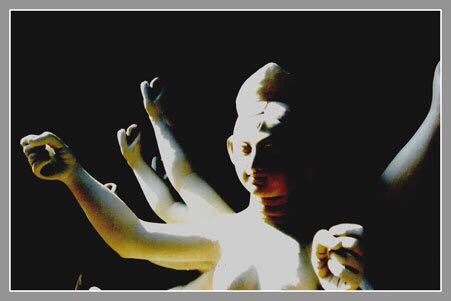
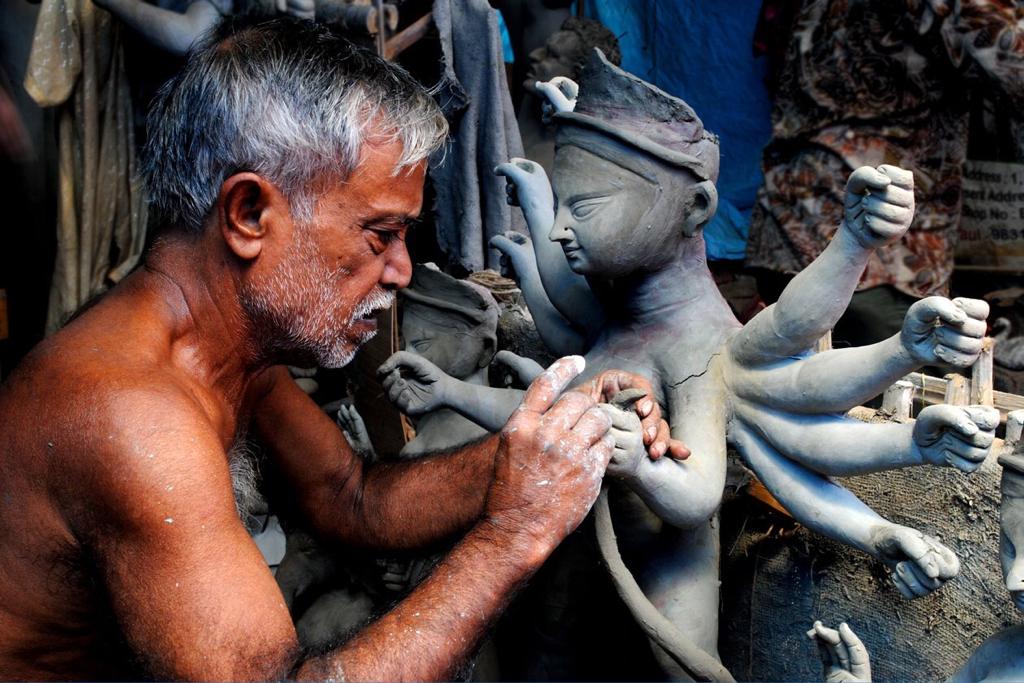
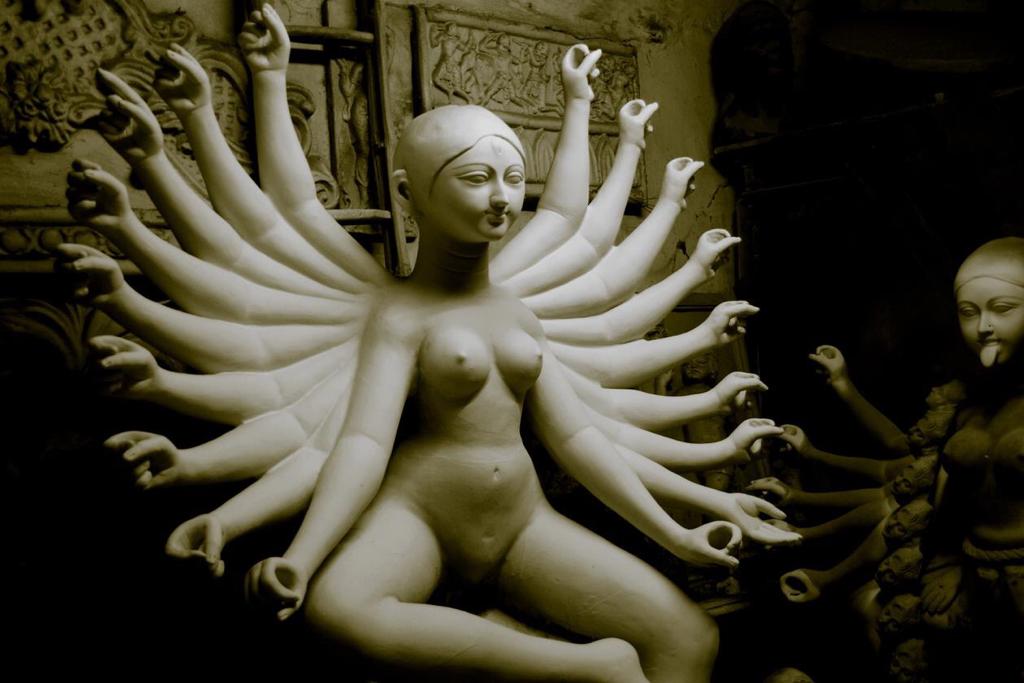
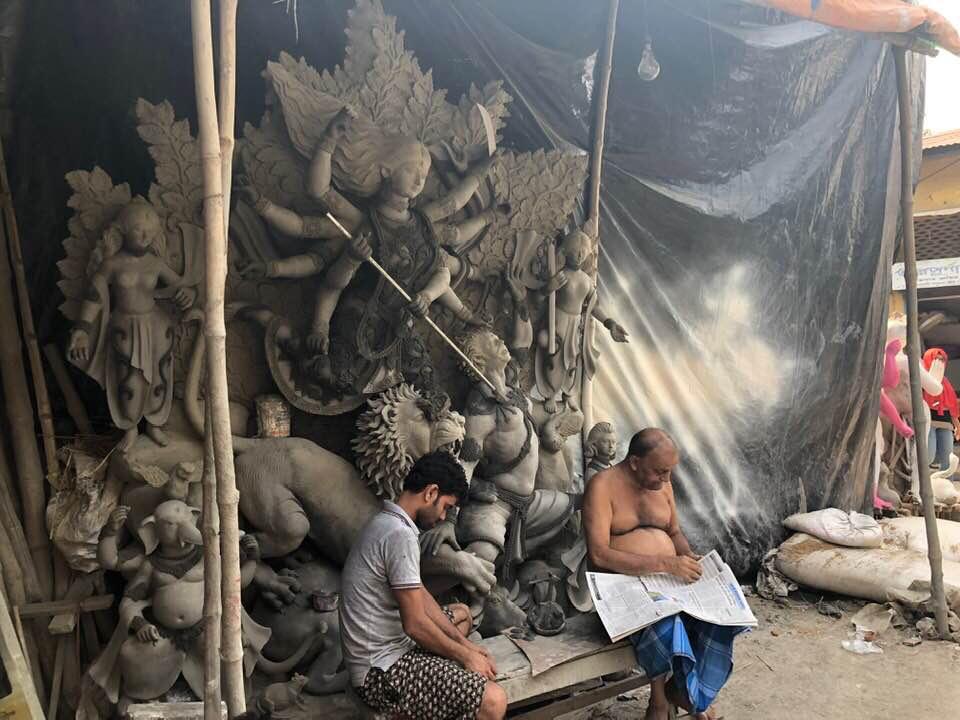
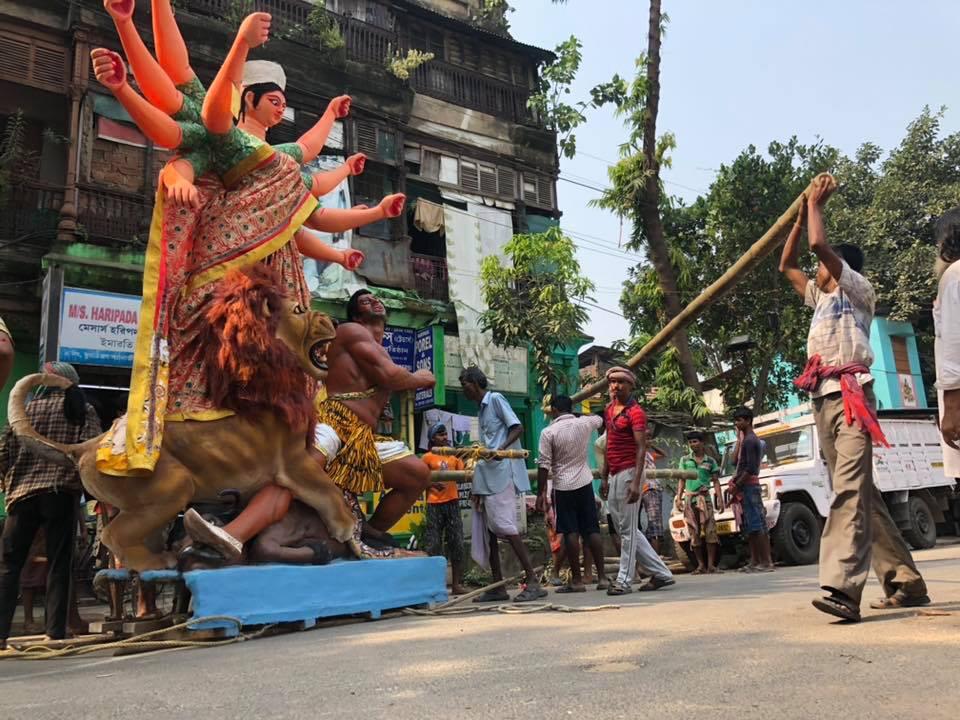
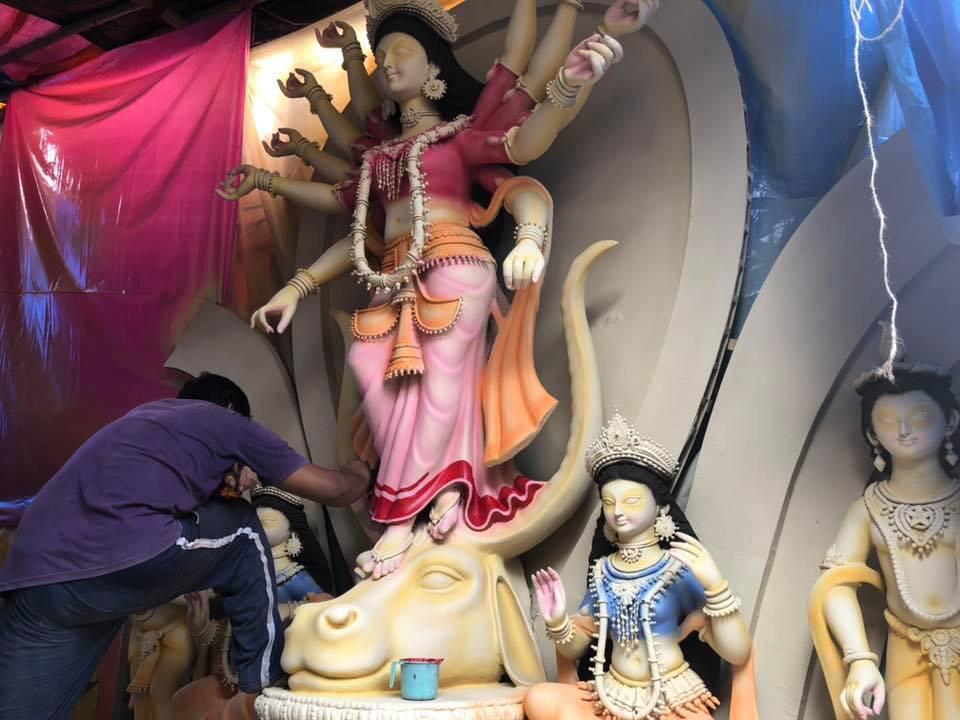
With the commencement of Mahalaya, West Bengal starts bathing in the joy of Durga Puja which starts with Mahasaptami – exactly after seven days. (In 2020, the gap between Mahalaya and commencement of Durga Puja is longer than usual.) There can be immense joy and elation seen in all the individuals irrespective of their age. This is the most awaited time of the year and often leaves people teary-eyed during the end. While there are many different styles of the décor in different places, there are some things that are common and traditional since ages.
Maa Durga is a Hindu Goddess who symbolises power, strength and dignity present in a woman. She is considered as an incarnation of Lord Shiva’s wife Parvati and the festival commemorates the victory of the goddess over a demon called Mahishasura. According to Hindu mythology, she started the battle against the demon on the seventh day of Navratri, known as Maha Saptami and slayed him by the final day of Vijay Dashami. The centric idol placed in all the pandals depicts the scene when the Goddess slashes the demon with her weapon while sitting on her vehicle- the lion.
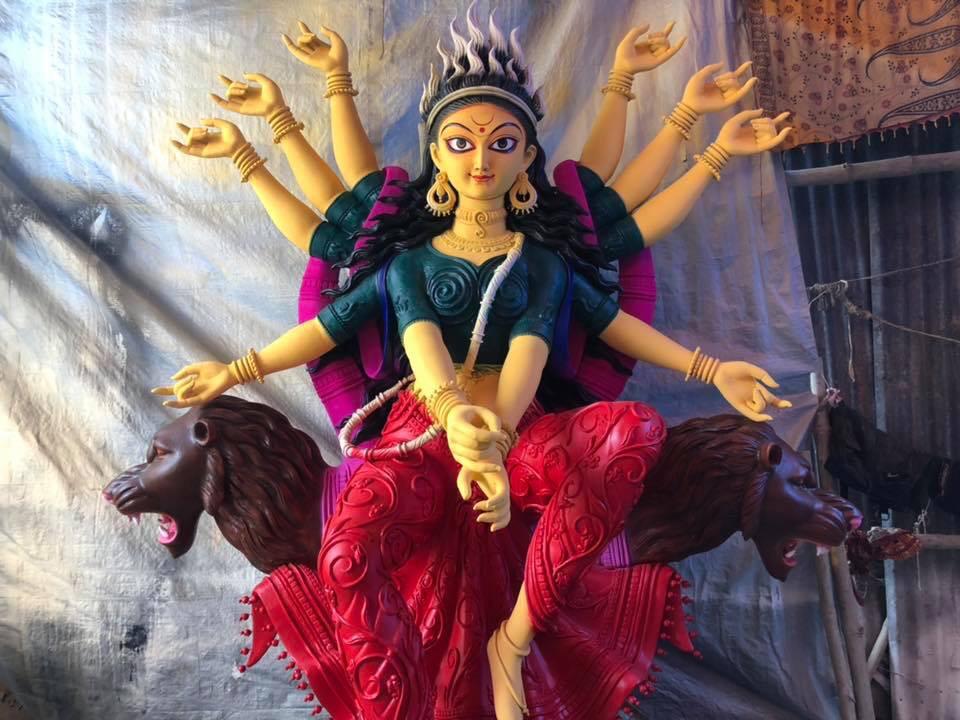
It is believed that Durga visits her paternal home during the Navratris along with her children. She can be seen accompanied by the idols of her children namely Lord Ganesh, Lord Kartikeya, Goddess Laxmi and Goddess Saraswati, in almost all the pandals. So, with celebrations and decorations all around, have you ever wondered the history behind it? How was this culture born and how is it continuing to surface every year?
History of Durga Puja

Talking about the past, worshipping Maa Durga has been dated back to late 1500s. Even though there is no textual evidence of the same, it is believed to have been landlords, or zamindar, of Dinajpur and Malda who initiated the puja. It was then followed by twelve friends of Guptipara in Hoogly, West Bengal, who started the tradition of community puja by collecting funds from local residents, naming it as “baro-yaari’ puja, or the ‘twelve-pal’ puja, in 1790. “The baro-yaari puja gave way to the sarbajanin or community puja in 1910, when the Sanatan Dharmotsahini Sabha organized the first truly community puja in Baghbazar in Kolkata with full public contribution, public control, and public participation. Now the dominant mode of Bengali Durga Puja is the ‘public’ version,” wrote M. D. Muthukumaraswamy and Molly Kaushal in Folklore, Public Sphere, and Civil Society.
Durga Puja in Kolkata & Rest of West Bengal
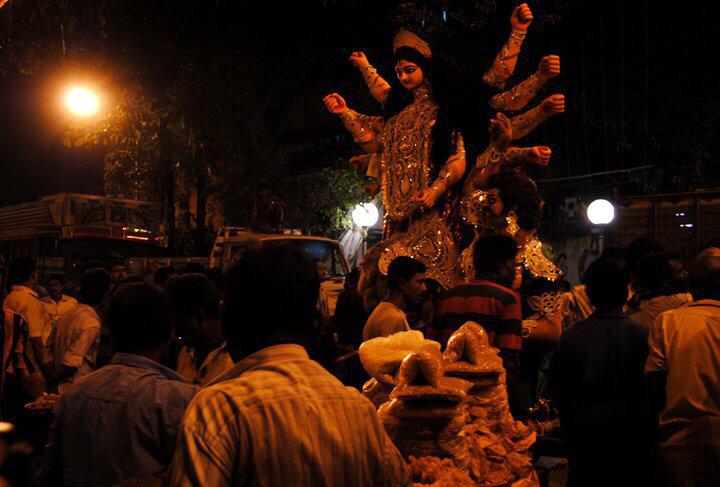
The festival has now become a huge endeavor and is celebrated with utter delight in various parts of the country especially West Bengal. The state is filled with more than thousands of pandals with exclusive and elite lighting spread throughout the roads. The capital of the state, Kolkata, witnesses great crowd in the day but the city surely doesn’t sleep during the night too. People, dolled up in their best of clothing, walk across the streets to feel the Pujo, and enjoy the ethereal lighting and magnificent themed-pandals. The city notices ample tourists during the time and everyone seems to contribute and participate in the celebrations.
From households to residential complexes to the neighborhoods, everyone gets ready to welcome Maa Durga in their own way. The pandals are made with such creativity and perfection that it becomes difficult to choose the top-scorer among those. Not only are the pandals decorated, but you can also see different ways of art demonstration in every area. One such installation includes a kilometer long auspicious painting or ‘alpana’ drawn on the Lake Road, that went viral on social media and left many of the famous personalities spell-bound. Some of the pandals are so high-profile that celebrities from Bollywood or politics are summoned to inaugurate them. These pandals are scrutinized and the best of them is declared as the top most pandal of the year.
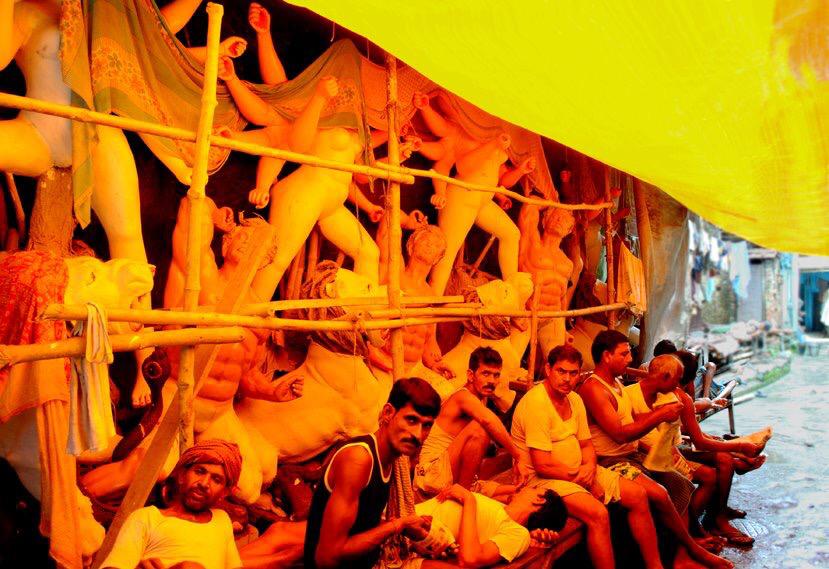
The themes selected for pandals are very innovative and creative depicting social, political or environmental ideas. Some pujas refer to the water-crisis, while some shows criticism over pollution; some are decorated like the movie Baahubali sets, while some incorporated Jurassic Park with dinosaurs. The idols are molded as per theme and each of them bestows different expressions and novelty. The sight is mesmerizing and draws thousands of people parading on the streets tirelessly throughout the night. As Durga Puja marks the grand festival in the city, all offices, educational institutions and business houses remain closed either for the whole Navratri or the last four days of the celebration.
Residential complex and housing colonies organize different activities and competitions to aptly enjoy the occasion and flaunt their talents. These activities include dance/singing competition, fancy dress competition, talent hunt, etc.. Apart from pandal hopping, there are other places that attracts youngsters too and those are DJ’s, Disco-Dandiya, organized by various hotels and banquets. If you are a foody, this grand festival fills your appetite with best of foods available at every footstep. You can opt for some posh restaurants or can mingle with street foods available throughout the night.
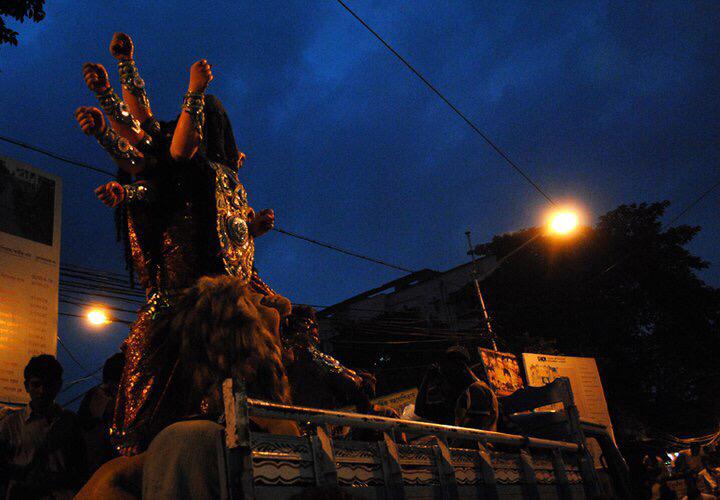
The tenth day, Vijay Dashmi, is started with the ‘Sindur Khela’, where the married women offer sindur to the Goddesses followed by applying the sindur to female friends, family or neighbors. This marks the end of the ten days celebration and beginning of the Visarjan, where the idols are immersed into the water with great pomp and dance. The devotees bids farewell to Maa Durga, and are filled with remorse and sadness but with relief that they would witness the same pompous show next year too.
Other States – Navaratri or Dusshera
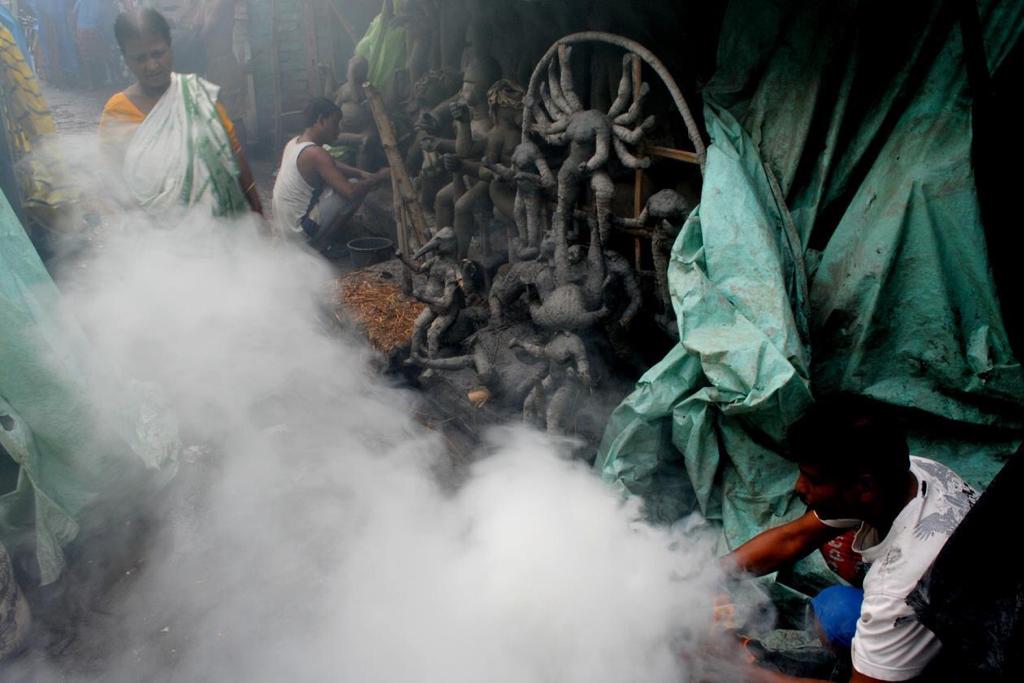
Apart from Bengal, many other states celebrate Durga Puja in their own way with grace and elegance. Navratri is celebrated by performing Garba and Dandiya in states like Gujarat and Maharashtra respectively. The Mysore Palace in Karnataka is decorated as a royal bride with more than a lakh light on Vijay Dashmi making it a fortune to watch.
The citizens of Punjab, who are considered great devotees of Maa Durga, organize daily jagrans during the nine nights of the festival. These are some of the most famous Navratri celebrations in India. One way or the other, Durga Puja is and will be one of the most awaited and enthusiastic festivals of India.
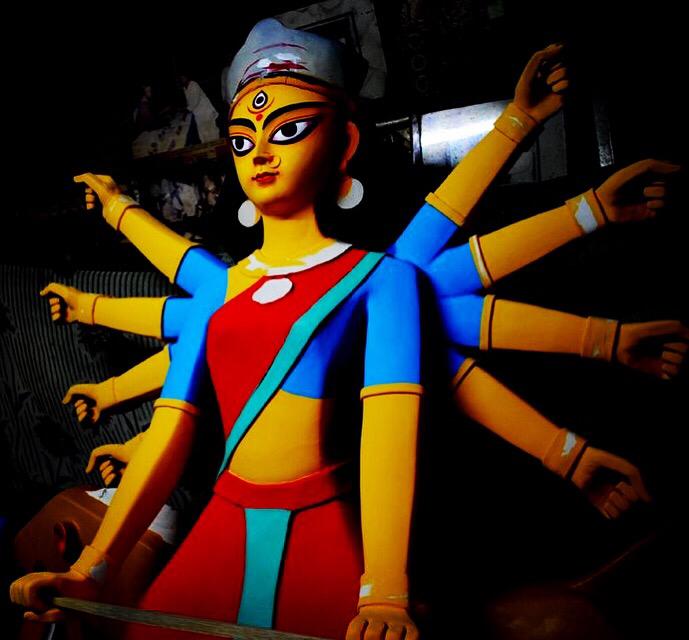
About Pooja Sahal
Pooja has done her B.Tech in IT. To devote her time to her family while feeding the writer in her, she has started writing blogs and freelancing for a long time. She’s prompt, understands the needs of clients, efficient and believes in delivering her work on time.
Disclaimer: The opinions expressed in this post are the personal views of the author. They do not necessarily reflect the views of www.kolkatafusion.wordpress.com. Any omissions or errors are the author’s and KolkataFusion does not assume any liability or responsibility for them.

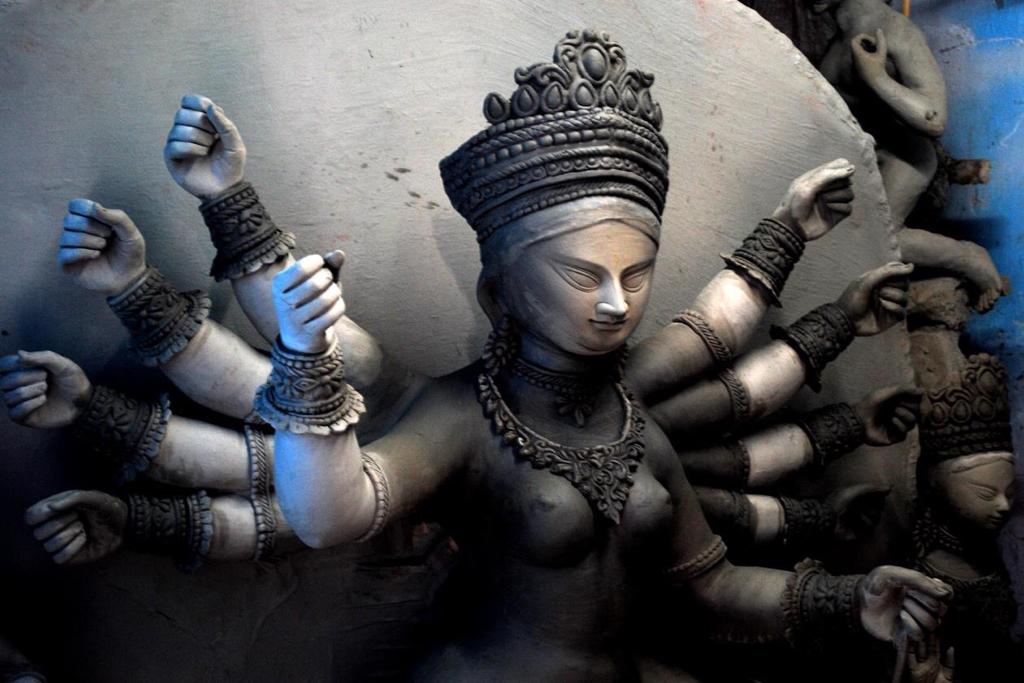
😍😍